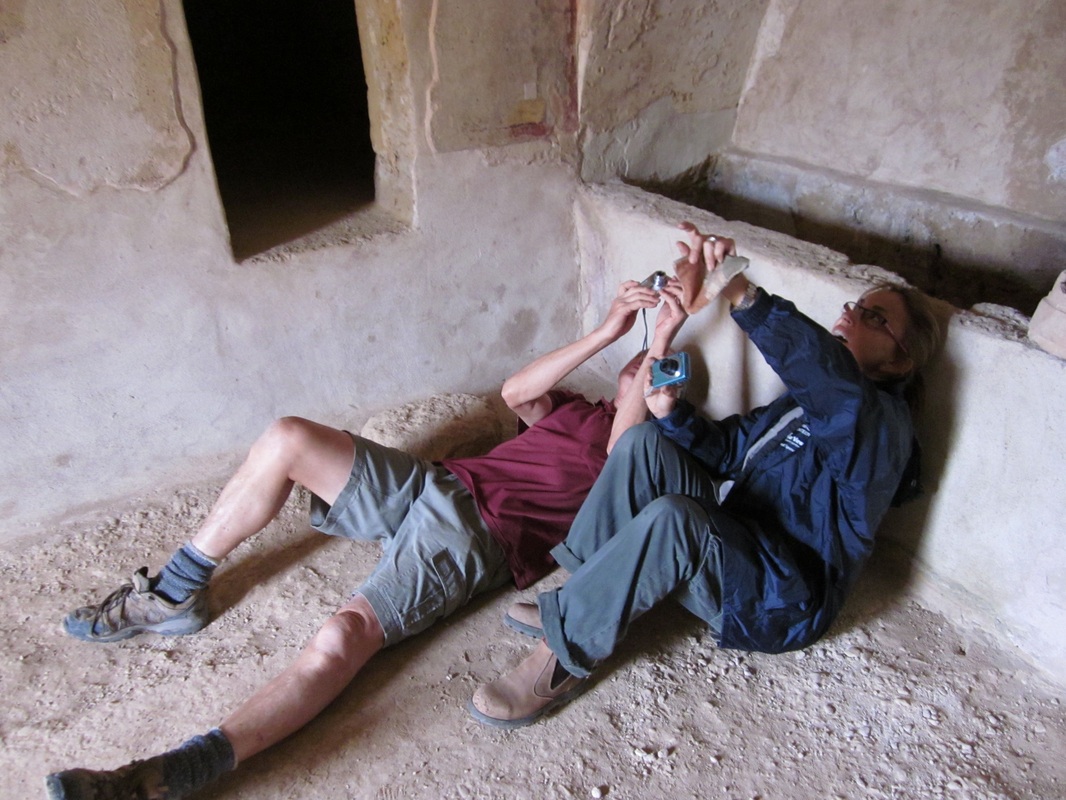A grey overcast morning in Paphos after a roaring storm of wind and rain in the night. The moist day is a wonderful opportunity to photograph wall 108, the wall that Richard once called the ‘beautiful wall’ because of its large regularly cut stones that supported the arc of seating. The stone takes on a different subtlety when it’s moist, and the dust washed off; you can see tiny details. (Even the lizards that raced for cover sparkled.) The fresco on wall108 was important as part of a ceremonial entrance (parodos) into the theatre. I’ve discovered through scrutiny and measurement that it had a painted row of 4 or five red columns, possibly with swags of drapery between them – of which only glimpses remain.
The painted plaster first came to light in 1996, dug by Mel – he and his team, including my son Nic, found a ‘plaster pit’ full of fragments of painted plaster with leaves, ribbons and ‘fake’ marble amongst heavy stones against the wall.
Some of these stones were also painted, and had fallen from the curved vault over the parodos.
But after 15 years the plaster on the wall has suffered in the weather, fading and cracking. Lea is delicately scraping encrustations off a large fragment of turquoise green. She and Hugh have also helped me document comparable paintings in two Hellenistic tombs not far away.
It’s immensely exciting to put together all the evidence for painted plaster that made the Paphos theatre vibrant and distinctive.
Professor Diana Wood Conroy (University of Wollongong)
Bottom image: Hugh and Lea assisting Diana recording painted plaster on a nearby tomb for the Department of Antiquities.


 RSS Feed
RSS Feed